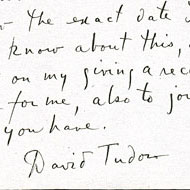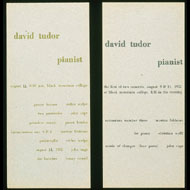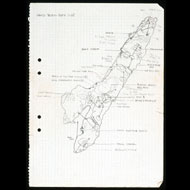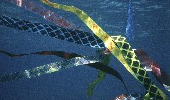The scores, notes, preparatory performance materials and realizations, correspondence, printed matter on electronics and anthroposophy, and more than 500 audiotapes in the David Tudor archive constitute a complete record of Tudor's activity as a performer and subsequently a composer who often incorporated visual elements—sculptures, found objects, video, light circuits—into the realization of his live electronic work. The David Tudor papers belong to a significant group of Research Institute collections documenting postwar collaborative arts and performance.
Research Library Collections
The following Research Library collections contain important primary documents related to the life and work of David Tudor:
The scores, notes, preparatory performance materials and realizations, correspondence, printed matter on electronics and anthroposophy, and more than 500 audiotapes in the David Tudor archive constitute a complete record of Tudor's activity as a performer and subsequently a composer who often incorporated visual elements—sculptures, found objects, video, light circuits—into the realization of his live electronic work. The David Tudor papers belong to a significant group of Research Institute collections documenting postwar collaborative arts and performance.
Through his concertizing in the 1950s and early 1960s and his original approach to composition, Tudor widened public exposure to two central movements of the postwar years: Fluxus and multimedia installation art. The Fluxus artist George Brecht studied with John Cage at the New School for Social Research in New York City and, beginning around 1960, was joined by the Japanese-born artist Yoko Ono and the American composer La Monte Young in creating short instruction-like texts proposing one or more actions (for instance, Young's Composition 1960 #10, consisting of the instruction "Draw a straight line and follow it"). Tudor's archive contains examples of these "event" scores, also known as "action" pieces, as well as programs of concerts in Germany in which he premiered the work. In addition, the Research Institute holds the archive of Jean Brown, pioneering American collector of Fluxus ephemera, objects, and multiples, many with sound and theatrical components. The Research Institute's collection of the papers of Dick Higgins—essayist, composer, and founder of "Something Else Press"—chronicle his literary contribution to the Fluxus movement and to the genre of "intermedia," a term coined by Higgins to describe art that moved between music, painting, theater, and poetry. The archives of Allan Kaprow, founder of the Happening, and the collected papers of performance artist Carolee Schneemann contain programs, performance texts, photographs, and audiotapes documenting the early history of performance in America.
From the time of his recitals and teaching at Black Mountain College in Asheville, North Carolina, in 1951, Tudor associated closely with visual artists. The papers of poet, potter, and Black Mountain faculty member Mary Caroline Richards contain the letters that Tudor wrote during European tours with the Merce Cunningham Dance Company, as well as documentation surrounding Black Mountain artists and poets in Richards's circle. Tudor's electronic performances and sound installations commissioned in the late 1960s and early 1970s by the New York-based organization Experiments in Art and Technology can be reconstructed from interviews, reports, and audiotapes in his archive and in the Research Institute's Experiments in Art and Technology records. Tudor conceived his quintessential collaborative piece, Rainforest IV, in a workshop he organized in New Hampshire in 1973. Video artist Bill Viola, then only twenty-two years old, worked directly with Tudor in identifying found objects and in activating them with electronic sounds to produce unique acoustic resonances. Viola's apprenticeship (eulogized in his letters from the early 1970s in the Tudor archive) inspired his approach to sound in video, a topic still relatively unexplored in the art-historical literature.
Image Bank
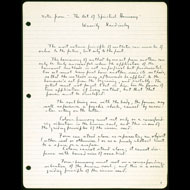 |

David Tudor
Notes on Wassily Kandinsky's The Art of Spiritual Harmony ( Über das Geistige in der Kunst, 1911; first English publication in London: Constable and Co., 1914) (recto),
ca. 1940s
|
|
 |
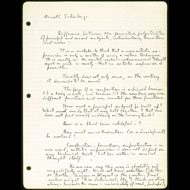 |

David Tudor
Notes on Arnold Schoenberg's "Tonality and Form" (1925) (recto), ca. 1940s
|
|
 |
 |
 |
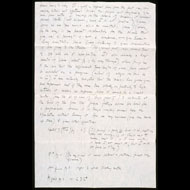 |

Letter from John Cage to David Tudor about Music of Changes (p. 1, recto), 1951
|
|
 |
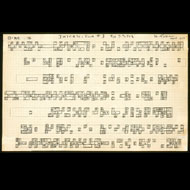 |

Morton Feldman
Autograph score of Intersection 3, 1953
© 1962 C. F. Peters Corporation
|
|
 |
 |
 |
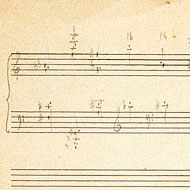 |

David Tudor
Realization of Morton Feldman's Intersection 3 (p. 1, recto, detail), 1953
|
|
 |
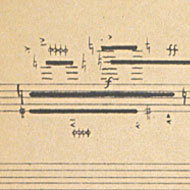 |

Earle Brown
Autograph score of 25 Pages (p. 4, detail), 1953
© 1953 Earle Brown
|
|
 |
 |
 |
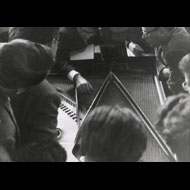 |

Photographer unknown
David Tudor performing John Cage's Water Music in Darmstadt, 1958
|
|
 |
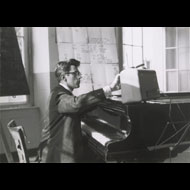 |

Photographer unknown
David Tudor performing John Cage's Water Music in Darmstadt, 1958
|
|
 |
 |
 |
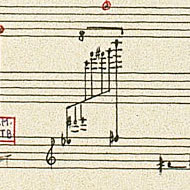 |

David Tudor
First realization of John Cage's Concert for Piano and Orchestra: Solo for Piano Prepared for the premiere performance at Town Hall in New York City (excerpt, detail), 1958
|
|
 |
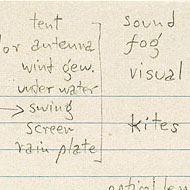 |

David Tudor
Notes for Island Eye, Island Ear -- A collaborative project utilizing island sounds transmitted through parabolic antennas (Tudor), cloud sculptures (Fujiko Nakaya), and kites (Jackie Matisse Monnier) (recto, detail), ca. 1974
|
|
 |
 |
 |



